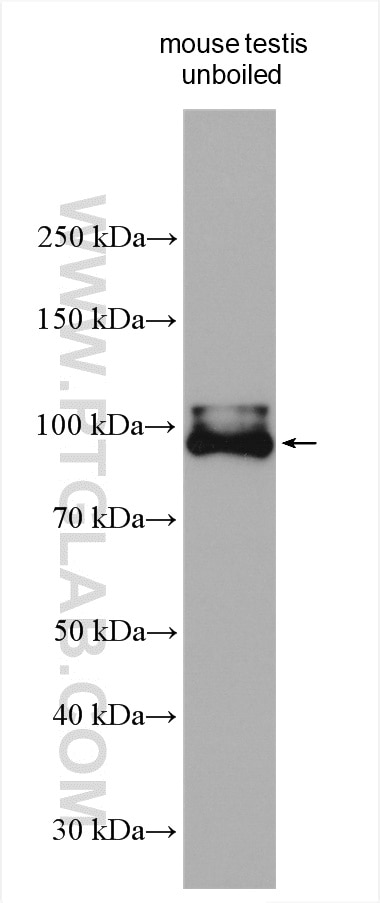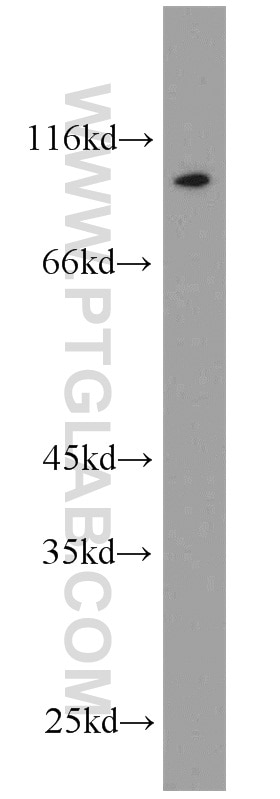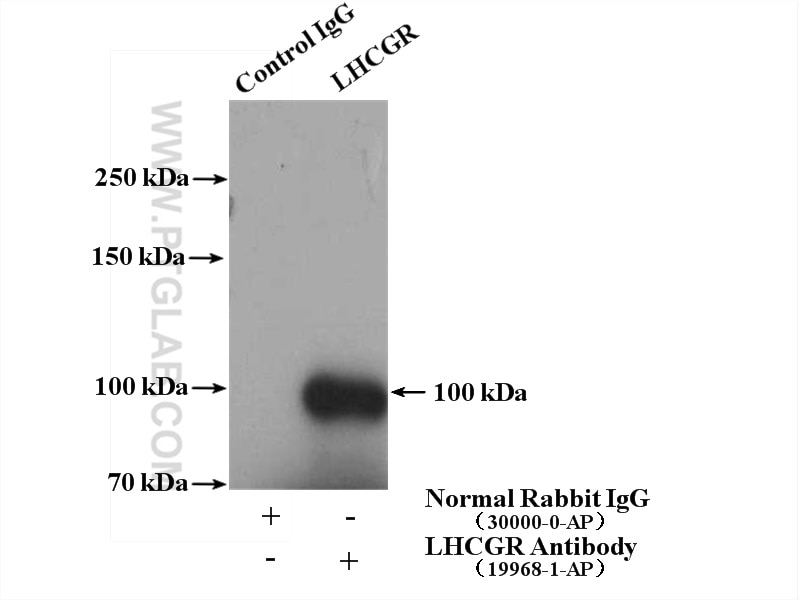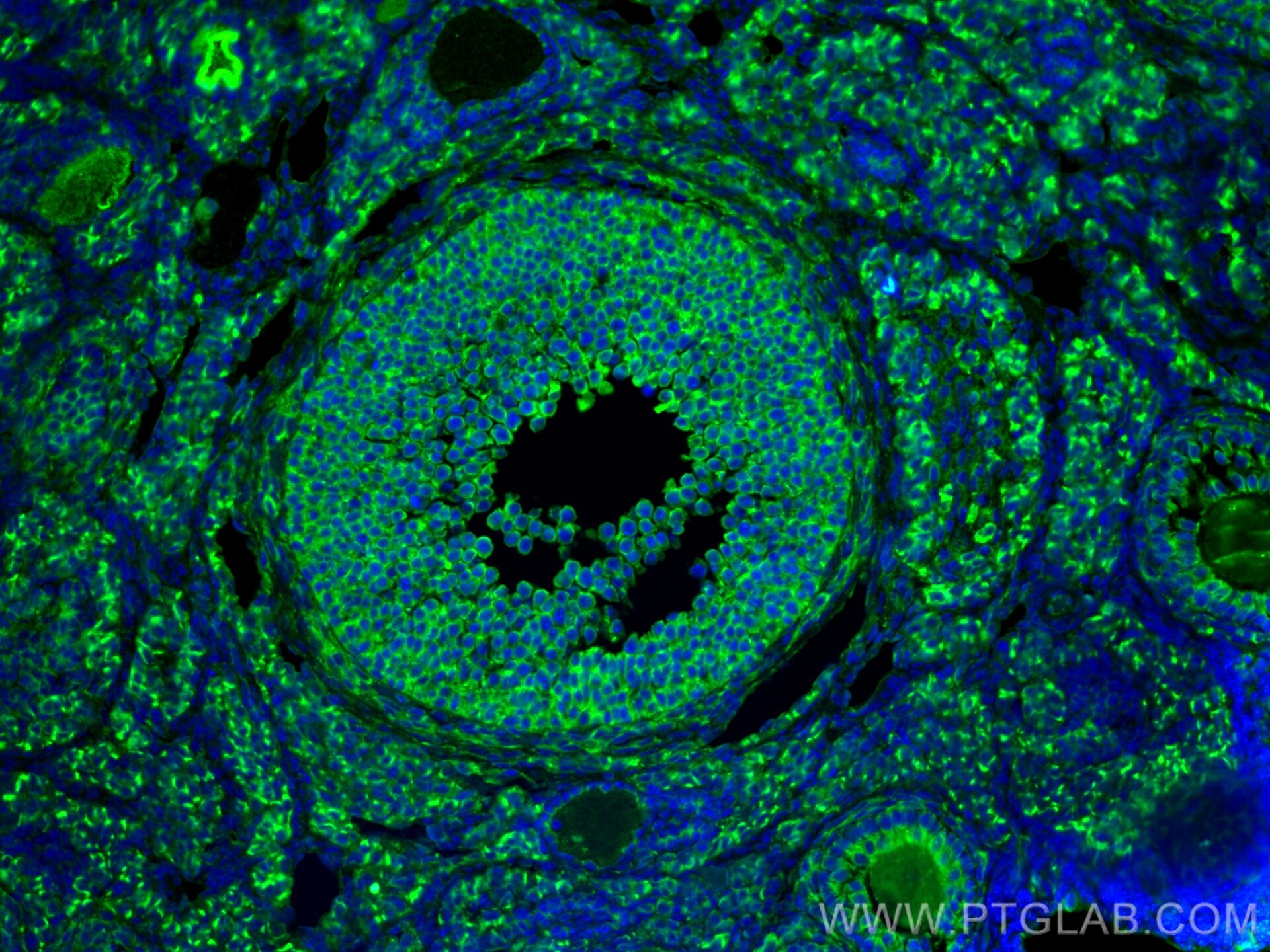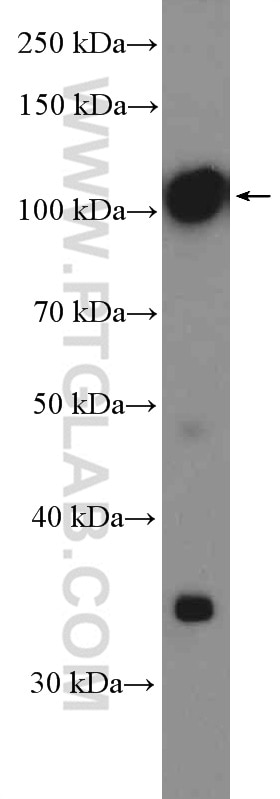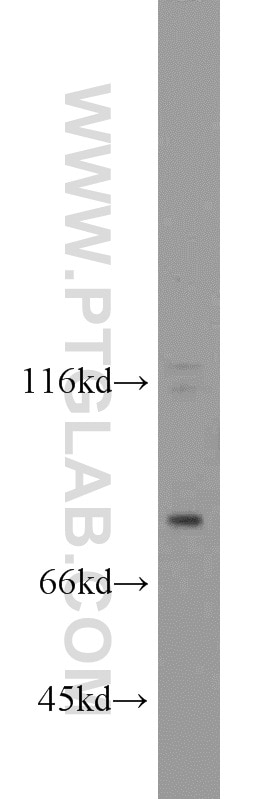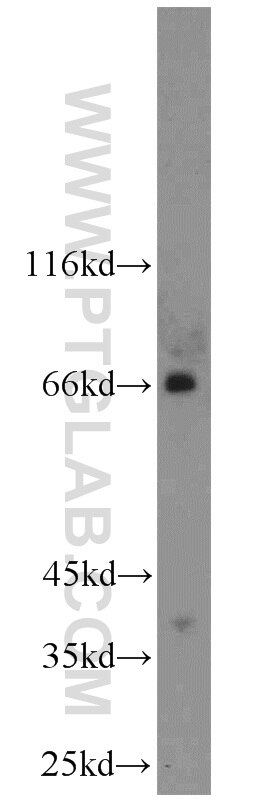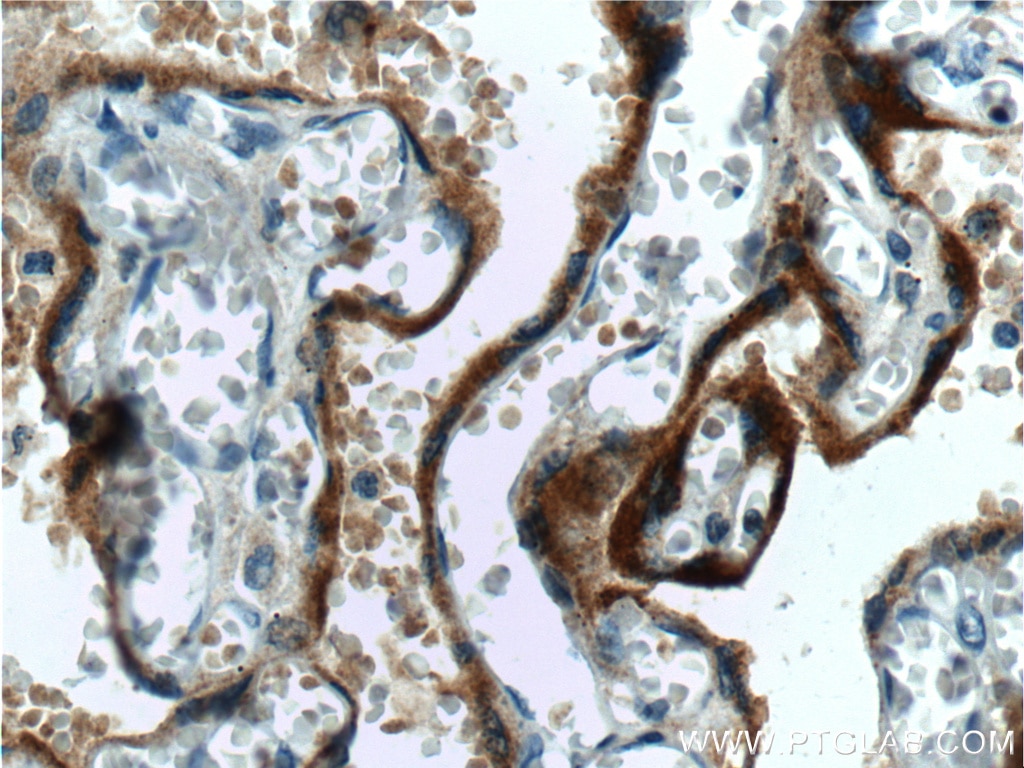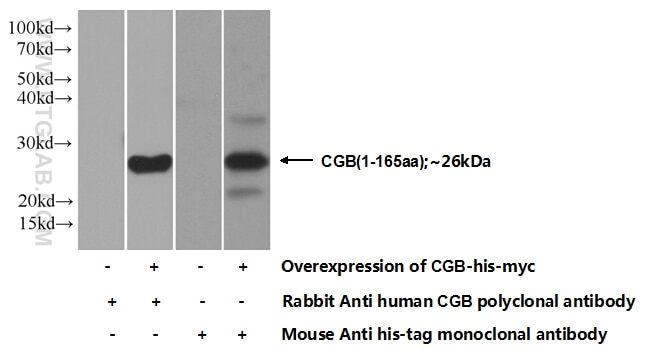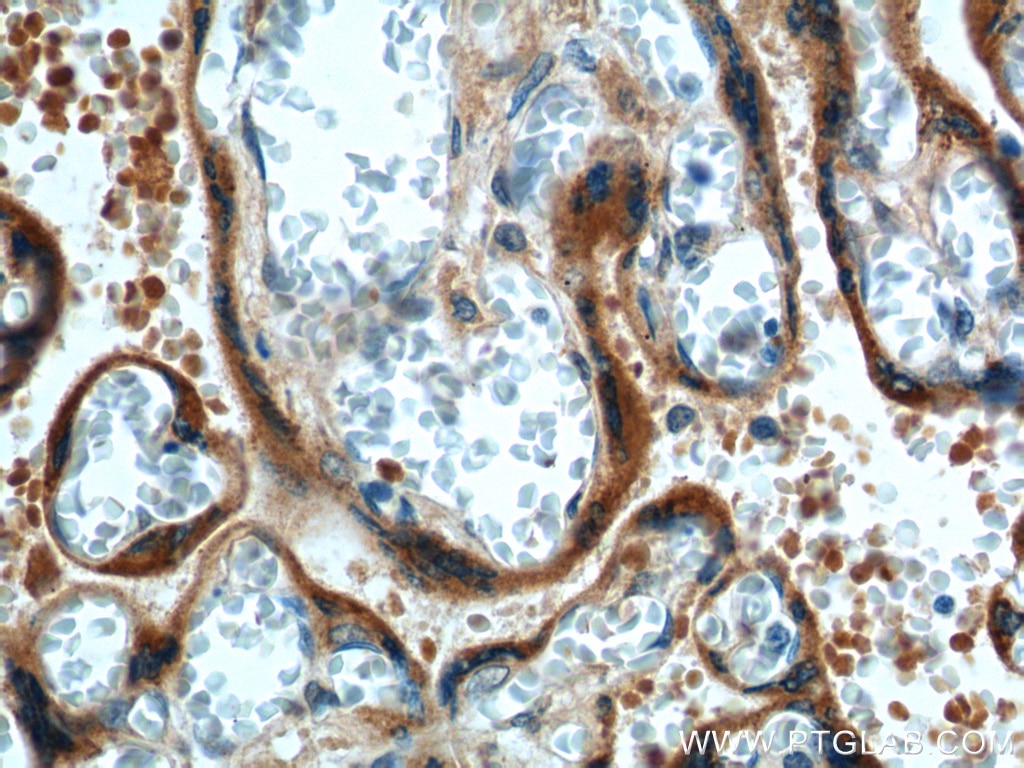- Phare
- Validé par KD/KO
Anticorps Polyclonal de lapin anti-LHCGR
LHCGR Polyclonal Antibody for WB, IP, IF, ELISA
Hôte / Isotype
Lapin / IgG
Réactivité testée
Humain, rat, souris
Applications
WB, IHC, IF-P, IP, ELISA
Conjugaison
Non conjugué
N° de cat : 19968-1-AP
Synonymes
Galerie de données de validation
Applications testées
| Résultats positifs en WB | tissu testiculaire de souris non bouilli, tissu ovarien de souris |
| Résultats positifs en IP | tissu testiculaire de souris, |
| Résultats positifs en IF-P | tissu ovarien de souris, |
Dilution recommandée
| Application | Dilution |
|---|---|
| Western Blot (WB) | WB : 1:500-1:3000 |
| Immunoprécipitation (IP) | IP : 0.5-4.0 ug for 1.0-3.0 mg of total protein lysate |
| Immunofluorescence (IF)-P | IF-P : 1:50-1:500 |
| It is recommended that this reagent should be titrated in each testing system to obtain optimal results. | |
| Sample-dependent, check data in validation data gallery | |
Applications publiées
| KD/KO | See 2 publications below |
| WB | See 24 publications below |
| IHC | See 4 publications below |
Informations sur le produit
19968-1-AP cible LHCGR dans les applications de WB, IHC, IF-P, IP, ELISA et montre une réactivité avec des échantillons Humain, rat, souris
| Réactivité | Humain, rat, souris |
| Réactivité citée | rat, Humain, souris |
| Hôte / Isotype | Lapin / IgG |
| Clonalité | Polyclonal |
| Type | Anticorps |
| Immunogène | Peptide |
| Nom complet | LHCGR |
| Masse moléculaire calculée | 79 kDa |
| Poids moléculaire observé | 90-100 kDa |
| Numéro d’acquisition GenBank | NM_000233 |
| Symbole du gène | LHCGR |
| Identification du gène (NCBI) | 3973 |
| Conjugaison | Non conjugué |
| Forme | Liquide |
| Méthode de purification | Purification par affinité contre l'antigène |
| Tampon de stockage | PBS avec azoture de sodium à 0,02 % et glycérol à 50 % pH 7,3 |
| Conditions de stockage | Stocker à -20°C. Stable pendant un an après l'expédition. L'aliquotage n'est pas nécessaire pour le stockage à -20oC Les 20ul contiennent 0,1% de BSA. |
Informations générales
Lutropin-choriogonadotropic hormone receptor (LHCGR, also known as LHR or LSHR) belongs to the rhodopsin-like family of G protein-coupled receptors (GPCRs) and plays a crucial role in the regulation of gonadal functions by stimulating steroidogenesis in response to luteinizing hormone (LH) or hCG (PMID: 15866423). Mutations in LHCGR gene result in familial male-limited precocious puberty, Leydig cell hypoplasia, and empty follicle syndrome (PMID: 30711030). LHCGR protein consists of 699 amino acids with a calculated molecular weight of 79 kDa. Due to massive glycosylation, the molecular mass of the mature LHCGR is higher (85-100 kDa) than the predicted molecular protein mass of 79 kDa (PMID: 23686864; 15866423; 29075189; 15969756).
Protocole
| Product Specific Protocols | |
|---|---|
| WB protocol for LHCGR antibody 19968-1-AP | Download protocol |
| IF protocol for LHCGR antibody 19968-1-AP | Download protocol |
| IP protocol for LHCGR antibody 19968-1-AP | Download protocol |
| Standard Protocols | |
|---|---|
| Click here to view our Standard Protocols |
Publications
| Species | Application | Title |
|---|---|---|
Part Fibre Toxicol Chronic exposure to polystyrene microplastics induced male reproductive toxicity and decreased testosterone levels via the LH-mediated LHR/cAMP/PKA/StAR pathway. | ||
Int J Nanomedicine La2O3 Nanoparticles Induce Reproductive Toxicity Mediated by the Nrf-2/ARE Signaling Pathway in Kunming Mice. | ||
Reprod Biol Endocrinol miR-6881-3p contributes to diminished ovarian reserve by regulating granulosa cell apoptosis by targeting SMAD4 | ||
Am J Pathol Amyloid Precursor Protein Overexpression in Down Syndrome Trophoblast Reduces Cell Invasiveness and Interferes with Syncytialization. | ||
